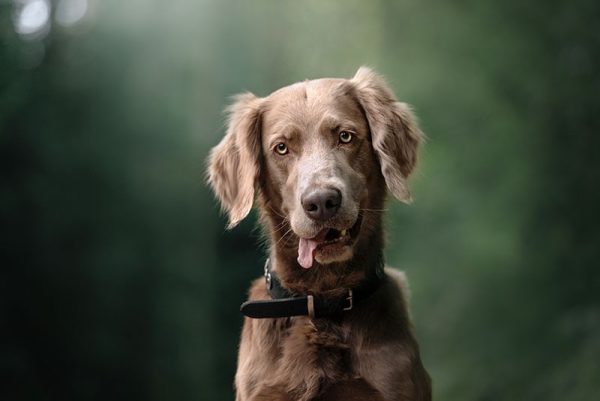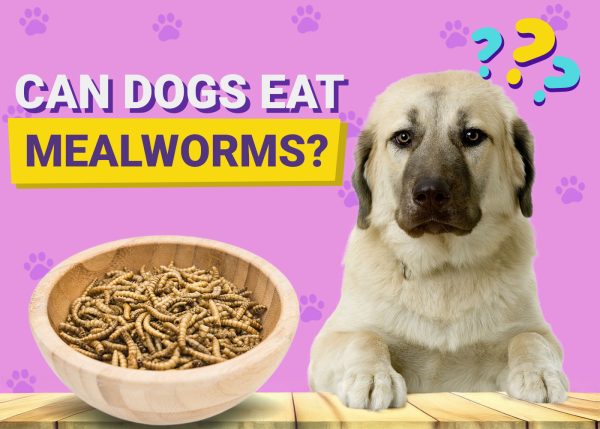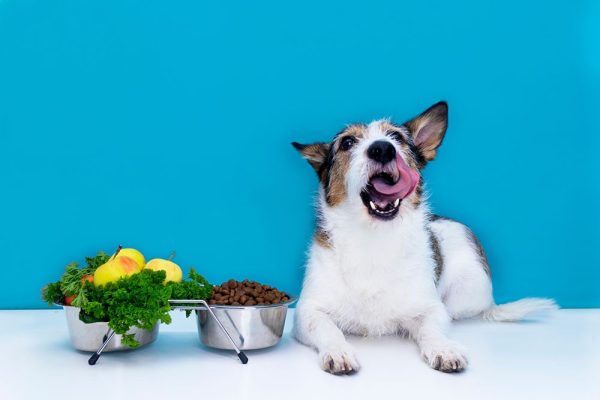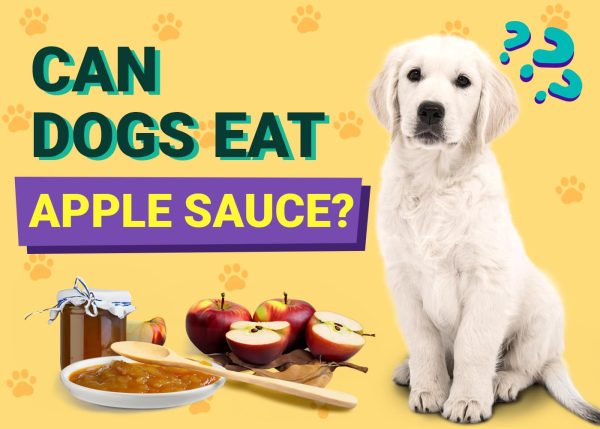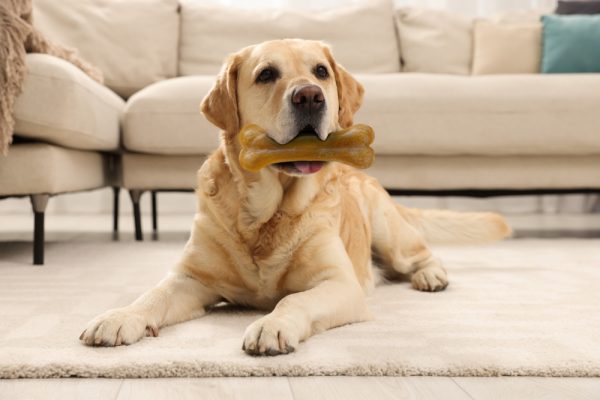In this article
Some people look at dogs and think, “Their bark is worse than their bite.” However, that may not be the case for all dogs. Some breeds are built to have a powerful bite force. How powerful exactly? While it is difficult to give exact measurements of a breed’s bite force, we can speculate which breeds would have a powerful bite based on their anatomy. Read on to see who made our list.

An Important Note About Measuring Bite Force
Despite what you may have read, there have actually been very few scientific studies on the bite force of specific breeds. One official study focused on police dogs, specifically German Shepherds and Belgian Malinois. The trained police dogs ran 25 meters and bit down on their trainers’ sleeves, which were fitted with three force sensors. The German Shepherds’ median bite force was recorded as 360.4 N, and the Malinois’ was 247.0 N.1
While there are claims that some dogs have bite forces of shocking strengths (over 3,000 N), they are unfounded or exaggerated. Take the African lion, for example. A study on lion bite force was published in the Journal of Experimental Biology and stated the measured canine bite force of lions was 1,104–1,483 N, and the incisor bite force was 1,594 N.2 So, for a domesticated dog to have a bite force two or three times that of a lion seems far-fetched (pun intended).

How We Created Our List of Dogs With the Strongest Bite Force
Now that we have stated there are no studies that have measured the bite forces of all dog breeds, how did we come up with this list? It is impossible to give specific measurements of bite force for each breed without extensive studies using a large number of dogs representing each breed, so we have applied anatomy, physiology, and biomechanics to rank the following breeds according to predicted bite force.
Anatomy plays a major role in what dogs we would consider to have a strong bite force. Here are some of those considerations:
- Body size and skull size
- Muzzle length and width
- Neck strength and stability
- Masseter and temporalis muscle mass (the muscles controlling the jaw)
- Occlusion of teeth (teeth that line up normally)
You will notice that many of these breeds are very similar in their appearance and anatomy, which is by no means a coincidence, as their shared characteristics are what puts them on our list.
Although it’s no surprise that some of these breeds are found on restricted lists in several countries, it is important to note that bite force strength does not necessarily correlate to aggression or the likelihood of biting. It simply gives an indication of the potential capacity for damage if they were to bite.

The 22 Dog Breeds Built to Have the Strongest Bite Force
1. Japanese Tosa

- Maximum weight: 200 pounds
The Japanese Tosa (also known as the Japanese Inu) is a robust canine that was initially bred for fighting. Thankfully, they have moved away from that practice and are used more commonly as watchdogs. Their size and deep bark would definitely intimidate strangers! Despite that, with the proper training, they can be incredible companions and loyal to their family. This breed, however, is banned in the UK.
2. Boerboel

- Maximum weight: 200 pounds
Second on the list is the Boerboel. This breed was recognized by the AKC in 2015, so it is a fairly new official breed. Originating from South Africa, this breed supposedly brought down lions with their powerful bite force. However, these are just stories and legends. But looking at the size of this breed, there is no doubt that they will have an intense bite force. Their name means “farm dog”, so they were often used as reliable protectors of livestock.
3. Tibetan Mastiff

- Maximum weight: 150 pounds
The Tibetan Mastiff has a fascinating backstory. According to legend, these dogs are the souls of monks and nuns who were not good enough to be reincarninated as humans. Instead, they came back as these magnificent beasts. The Tibetan Mastiffs have incredibly strong jaws. This, combined with their high level of intelligence, could be a recipe for disaster if they are cooped up and bored in their house. For some reason, these dogs love to chew wood. Say goodbye to your tables if you have a bored Tibetian Mastiff as home!
4. Neopolitan Mastiff

- Maximum weight: 150 pounds
If you’ve ever met one of these gentle giants, you’ll know that you’re usually more at risk of being drowned in drool than being bitten, but that doesn’t mean they won’t ever bite. With their huge heads, thick necks, and powerful bodies, the bite force of this breed is estimated to be quite high, but fortunately, this is largely a theoretical measure based on anatomy and physics.
5. Kangal (aka Anatolian Shepherd)

- Maximum weight: 145 pounds
The Kangal, sometimes called the Anatolian Shepherd, is often touted as having the strongest bite force out of all domesticated dogs. However, this breed’s bite force has not been formally measured. However, this is a large dog, weighing as much as an adult human! This will indeed impact the power of their bite. They also have a longer muzzle and thick, strong neck, adding to the impact of their bite force, but they lack the broad, muscular head of our top breeds.
6. Dogo Argentino

- Maximum weight: 120 pounds
Dogo Argentino resembles a Pit Bull at first glance; however, they are a Mastiff-type canine. As their names suggests, they were developed in Argentina in the 1920s. There was discussion to use them as fighting dogs; however, Dr. Antonio Nores Martinez—the man responsible for the breed’s creation—wanted to use the dogs for hunting purposes, primarily for big-game animals like boars and mountain lions. If this breed was designed to be a match to those wild predators, you can only imagine the intensity of their bite force. This is another breed that is banned in the UK.
7. Fila Brasileiro
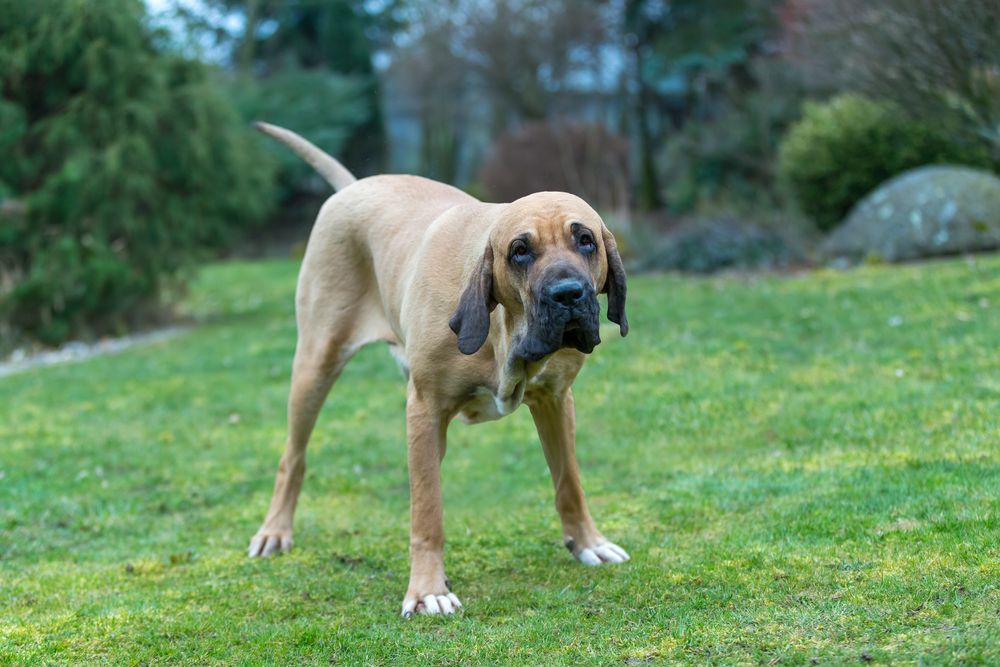
- Maximum weight: 110 pounds
The Fila Brasileiro is a dog of many names: Brazilian Mastiff, Brazilian Bloodhound, Cao de Brasil, Cao de Fila, and the Fila. Whichever name you choose, there is no doubt you will be impressed with the size of this canine. However, this breed comes with a slightly dark past (no fault of their own; rather, it is the fault of the people who trained them). These dogs were originally used to protect livestock but were also used for tracking down enslaved people. At the present, the Fila Brasileiro is used a guard dog, protecting their family and property. This breed is banned in the UK.
8. Presa Canario

- Maximum weight: 110 pounds
The Presa Canario’s history dates back to the 15th and 16th century and used for guarding farms and cattle and killing wild or stray dogs on the Canary Islands. And due to the size of the Presa Canario (officially known as the Perro de Presa Canario until January 2024), they were successful at their job. Sadly, they had been used in dog fighting. When the Canary Islands banned dog fighting in the 1940s, the Presa Canario’s number saw a decline. However, people saw the breed’s worth and increased their numbers to use them as guard dogs.
9. Cane Corso
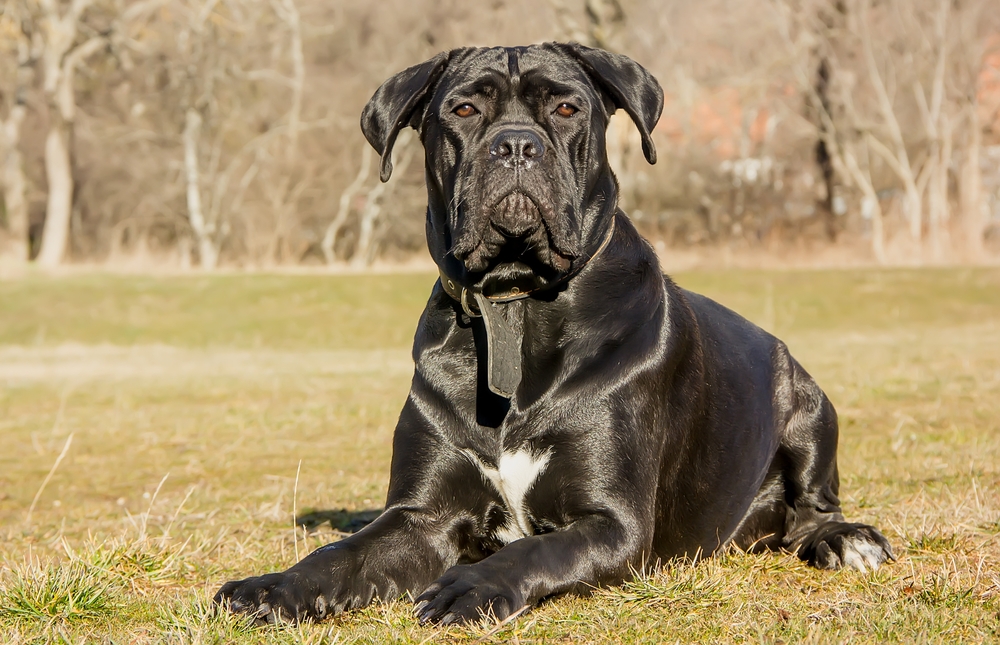
- Maximum weight: 110 pounds
The Cane Corso has a long and interesting history spanning several centuries, being used in war, raids, hunting, farming, and defense. Having outlived their usefulness, the breed was almost extinct by the mid 20th century, but was revived by fanciers to become a loyal, albeit intimidating looking, companion. The history and physiology of the Cane Corso paints a picture of a dog with impressively powerful jaws, but in most cases, it is in theory only, not practice. Like any dog, and particularly those on this list, early socialization and training are essential to ensure the Cane Corso’s bite force is only ever used on chew toys, but these days, they tend to be lovers, not fighters.
10. Caucasian Shepherd (Ovcharka)

- Maximum weight: 220 pounds
The Caucasian Shepherd, otherwise known as the Ovcharka, is a large and powerful breed native to the Caucasus. Traditionally bred to guard livestock from predators like wolves, this breed is enormous in size, with a wide skull and powerful jaw, very capable of delivering a powerful bite. They are known to be very loyal with strong protective instincts. With proper training these fearless and assertive animals can be gentle and devoted family dogs.
11. Akita

- Maximum weight: 130 pounds
The Akita is a powerful and sturdy breed, originating from Japan and bred for hunting. They were later refined in the US for protective roles. Their wide head, muscular body, and strong jaws contribute to their ability to yield great force with their bites if needed. Despite the intimidating look of an Akita, they are calm and extremely loyal. Proper training and socialization are essential so their strength can be channeled in positive ways.
12. Dogue de Bordeaux

- Maximum weight: 110 pounds
The Mastiff of Bordeaux is a perfect example of how an imposing dog, once used for fighting and hunting, has been more selectively bred for the calm temperament of a companion dog. Their considerable size, muscular head, and powerful jaws mean that the power of their bite is considerable, but they are generally slow to aggression, and most other things too!
13. Rottweiler

- Maximum weight: 135 pounds
Popular as a guard dog, the Rottweiler seems to be equally comfortable in the roles of fierce protector and cuddle-monster. You might notice that many of the breeds used as guard dogs aren’t the highest on the list when it comes to bite force. This is likely because these dogs tended to be bred for guarding against humans, and it doesn’t take a lot of force to damage us! The jaws of a Kangal or Boerboel would pose too high a risk of causing fatal injury, which should not be the aim of a guard dog. Even so, the bite force of a Rottweiler is nothing to sneeze at, as those meaty heads pack plenty of punch! Fortunately, Rotties are eager to please, and respond well to training, early socialization and good leadership, making them popular family pets.
14. Bullmastiff

- Maximum weight: 130 pounds
The Bullmastiff is a cross between a Bulldog and Mastiff, resulting in a dog with a powerful jaw. Originally bred to protect land against poachers, this dog did not fear people or wild predators. In fact, they are often referred to as “The Gamekeeper’s Night Dog”. They are swift, brave, and loyal. While they are not used on poachers anymore, they are still considered reliable and dutiful guard dogs, protecting the family and home.
15. American Bulldog

- Maximum weight: 100 pounds
The American Bulldog is quite different from their English counterpart and mainly bred to guard and protect livestock. Farm work is an incredibly popular job for canines with strong jaws to have, as they need to be prepared to attack predators if they threaten the livestock they are watching over. In the United States, the American Bulldog almost met with extinction between World War I and World War 2. But this breed made a comeback and is used primarily in the South, catching feral pigs that can cause a lot of distruction to farms and gardens. Not only do these dogs have a powerful bite, they are also impressive jumpers.
16. American Pit Bull Terrier

- Maximum weight: 65 pounds
Like the Staffordshire Bull Terrier (number 18), Pit Bulls have a reputation that is largely undeserved. These compact, loving dogs are in possession of a broad, muscular head and powerful jaws that mean that when they bite down hard, they can do a lot of damage, and people have often (erroneously) described them as having a locking jaw. For most Pit Bull owners, these dogs are loving, lazy, affectionate, and cuddly. For people who don’t know them, they can appear scary and dangerous. So why do they have such a bad reputation?
Pit Bull Terriers (or Pitties, as we like to call them), are not actually a recognized breed. They were originally created through the crossing of a number of bull terrier types, such as Staffies and American Bull Terriers, destined to meet their fates in dog fighting pits, hence the name Pit Bull. Because of this, breeding started to favor dogs with more aggressive tendencies, but this has changed when dog fighting was (mostly) abolished, and Pitties became more popular as pets.
17. Leonberger

- Maximum weight: 170 pounds
The fluffy giants are unique amongst the others on our list, having been originally bred as companions, only later being put to work on farms or in pastures. While their impressive size and head shape mean that the Leonberger’s bite force would be considerable, their less muscular heads and jaws suggest that their bite is far less than would be expected for a dog the size of a human!
18. Alano Espanol (Spanish Bulldog)

- Maximum weight: 110 pounds
Closely related to the Presa Canario, this impressive breed has a fascinating history, having been originally used by the nomadic Alani tribes to protect their herds as they traveled. Over time, the dogs were adopted into different cultures and used for the cruel sport of Bull Baiting. Unlike dogs used for dog fighting, the Alano worked in packs, and generally enjoy the companionship of other dogs, but can be wary of strangers and protective of their people. Their size and strong bite force make proper training and socialization a must, to ensure no humans are ever exposed to those powerful jaws.
19. Rhodesian Ridgeback

- Maximum weight: 85 pounds
You would think that a dog bred to defend flocks from predation by lions is going to need some pretty powerful jaws, but fortunately, they weren’t generally used to actually engage the fearsome big cats. The Ridgeback’s tracking skills, athleticism, and powerful bark made them valuable additions to the farming team, but these days, they are more likely to be found sitting on the sofa with the family than chasing wild predators.
20. Staffordshire Bull Terrier

- Maximum weight: 50 pounds
This is another breed that is the subject of an unfair and misguided reputation. Staffies are widely regarded as being friendly, loving, and affectionate family pets. They are sometimes bouncy and boisterous, others are lazy little couch potatoes. Unfortunately, they do have a reputation for being dog aggressive, and occasionally aggressive to humans too.
While the Staffordshire Bull Terrier is significantly smaller than most dogs on our list, their muscular head and strong jaws gives them a disproportionately strong bite force, so when they do bite, they can do a lot of damage. But raise them right, and you’ll never have to worry about finding out how much.
21. German Shepherd
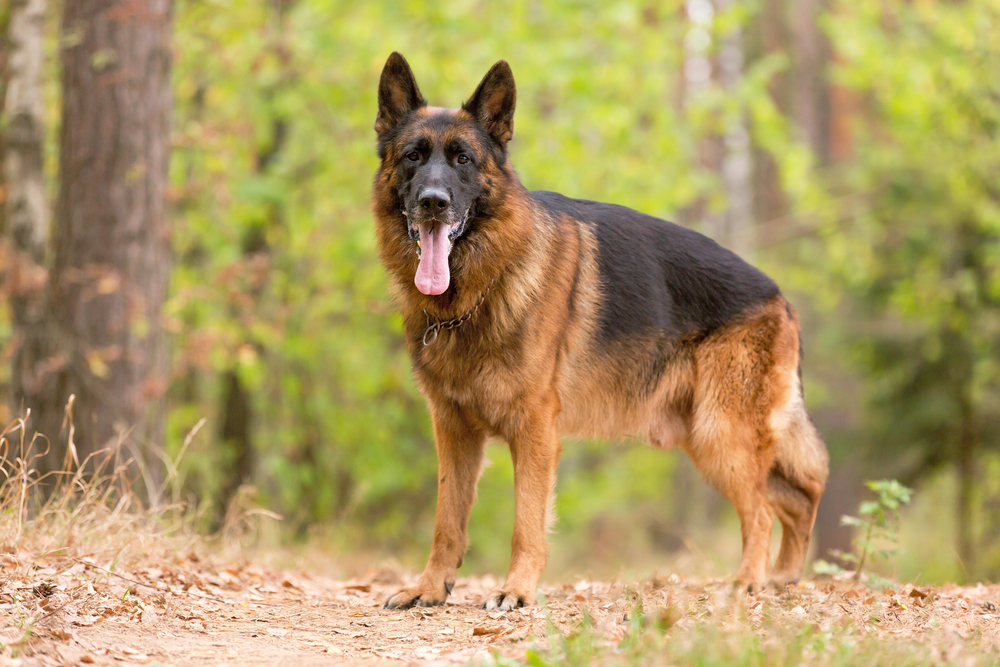
- Maximum weight: 90 pounds
Like the closely related Malinois, the German Shepherd is often used for guarding and police work. With a bite powerful enough to cause quite a bit of damage, they make an intimidating guard dog or sidekick, but their high trainability means they can be taught to ‘catch and release’ on command.
Although the German Shepherd also needs a lot of exercise, training, and stimulation, they tend to be less demanding than the Malinois, which is why they have become extremely popular family pets.
22. Belgian Malinois

- Maximum weight: 80 pounds
These powerful and athletic dogs are regularly employed by the police and military, but it’s not because they have the strongest bite. Their trainability and obedience make them ideal for work, and able to be trained to bite and release on command. This is also why the Malinois and German Shepherd were able to be used in the bite force studies mentioned earlier. Convincing some other breeds to bite and release an arm fitted with a pressure gauge on command may prove challenging, if not physically impossible, for some breeds.
The Malinois is highly energetic and needs plenty of exercise and stimulation to keep them happy and healthy, and they aren’t always suited to the pet life. Although they are not aggressive by nature, they can easily become bored, frustrated and destructive if not given lots of things to do and think about, and this can sometimes translate into aggression.

Why Do Dogs Bite?
The breed itself does not guarantee if they will bite a person or not bite.
The problem was that we had an influx of powerful dogs whose ancestors had been bred for fighting, and if not properly socialized and trained, many of these dogs found themselves reverting to what their genetics equipped them for. And so, we saw a spike in attacks and fatalities, leading to the breed being banned in many states and countries. This was a ‘quick fix’ solution to a problem that needed to be addressed with education.
For example, Staffies were originally bred as fighting dogs, often trained to kill by using smaller dogs as bait. Although genetics plays only part of a role in the temperament of an individual dog, it does play a role. Because of this, early socialization of dogs with fighting in their breed history is extremely important. Puppy school, dog parks, and doggy dates are vital for these dogs so that they learn from a very early age how to happily and safely play with dogs.
In the vast majority of cases, if a dog bites a human, it is because they have been perceived as a threat, usually to their family. Many breeds are extremely dedicated and loyal family members, and will do anything to protect their people, so this is another reason to make sure your pup is getting out and about, meeting plenty of people and dogs from as young as safely possible.
Early socialization, training, and obedience are important for any breed of dog, but are especially important when we are dealing with one that has a genetic history of fighting, and a set of very powerful jaws. As selection focuses more on companionship qualities instead of fighting, we would expect that most of the concerns regarding the lovely Pitties will follow breeds like the Cane Corso and Dogue de Bordeaux. We just hope they get a chance to prove it!


Final Thoughts
Despite what you might have read on other websites, there have been no scientific studies on the bite force of a large number of dog breeds, and there is no scientific evidence that supports the figures often encountered, which is why we have refrained from providing any specific bite force measurements for the breeds on our list. We have formulated our list based on the body size, weight, and physical characteristics of these breeds, which can give us an estimation of their relative bite forces.
This is not a list of the most dangerous dogs or even a list of dogs more likely to bite—there are many smaller dogs that would make that list first! But the breeds listed above are likely to be the most capable of causing serious damage if they were to bite; this is due to their anatomy, not necessarily their temperament.
Many, if not all, of the breeds listed above are known to be big old softies and can make wonderful companions and family pets. However, it is important to know what any breed is physically capable of, to appreciate the importance of responsible breeding, training, and socialization.
Featured Image Credit: Bildagentur Zoonar GmbH, Shutterstock








